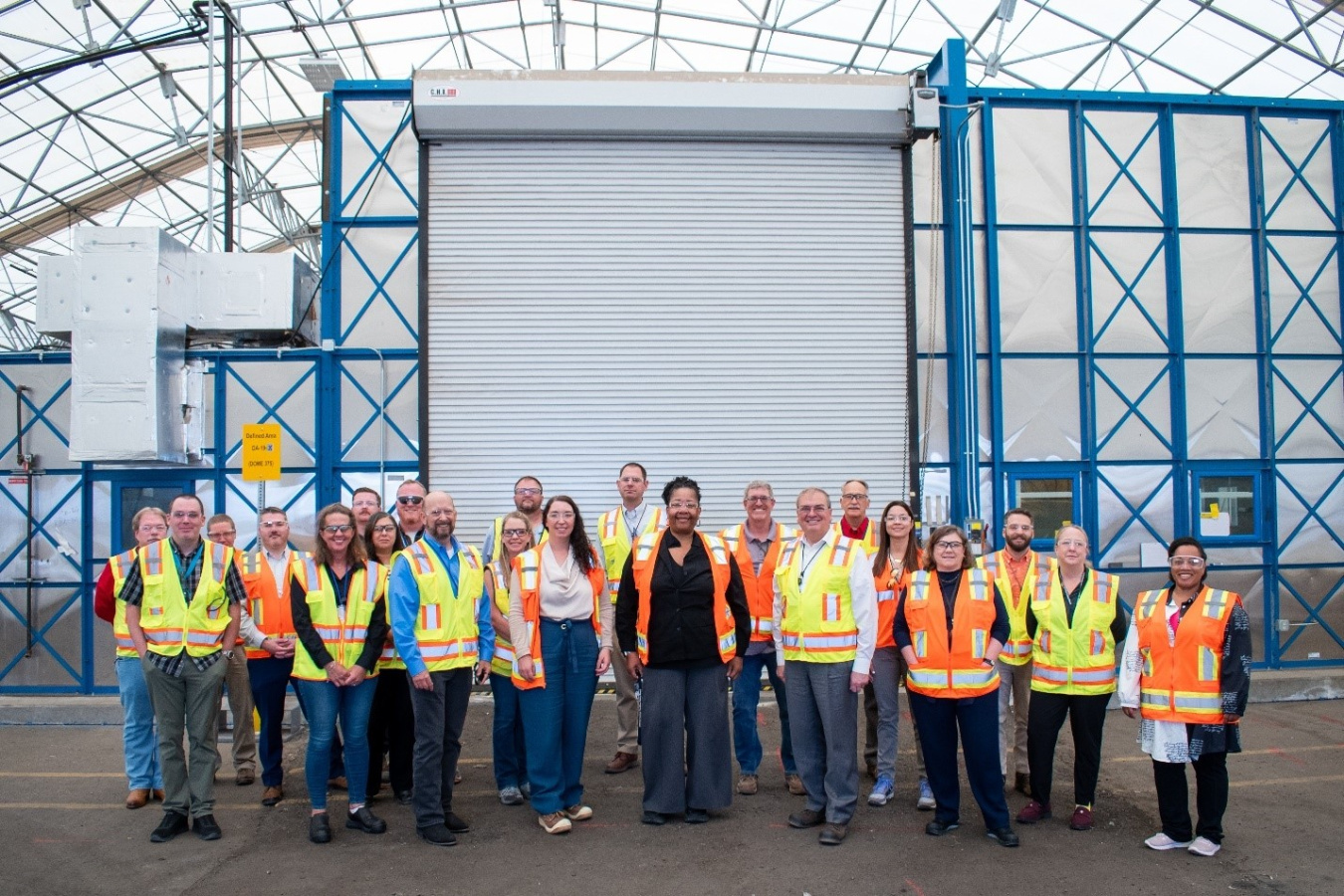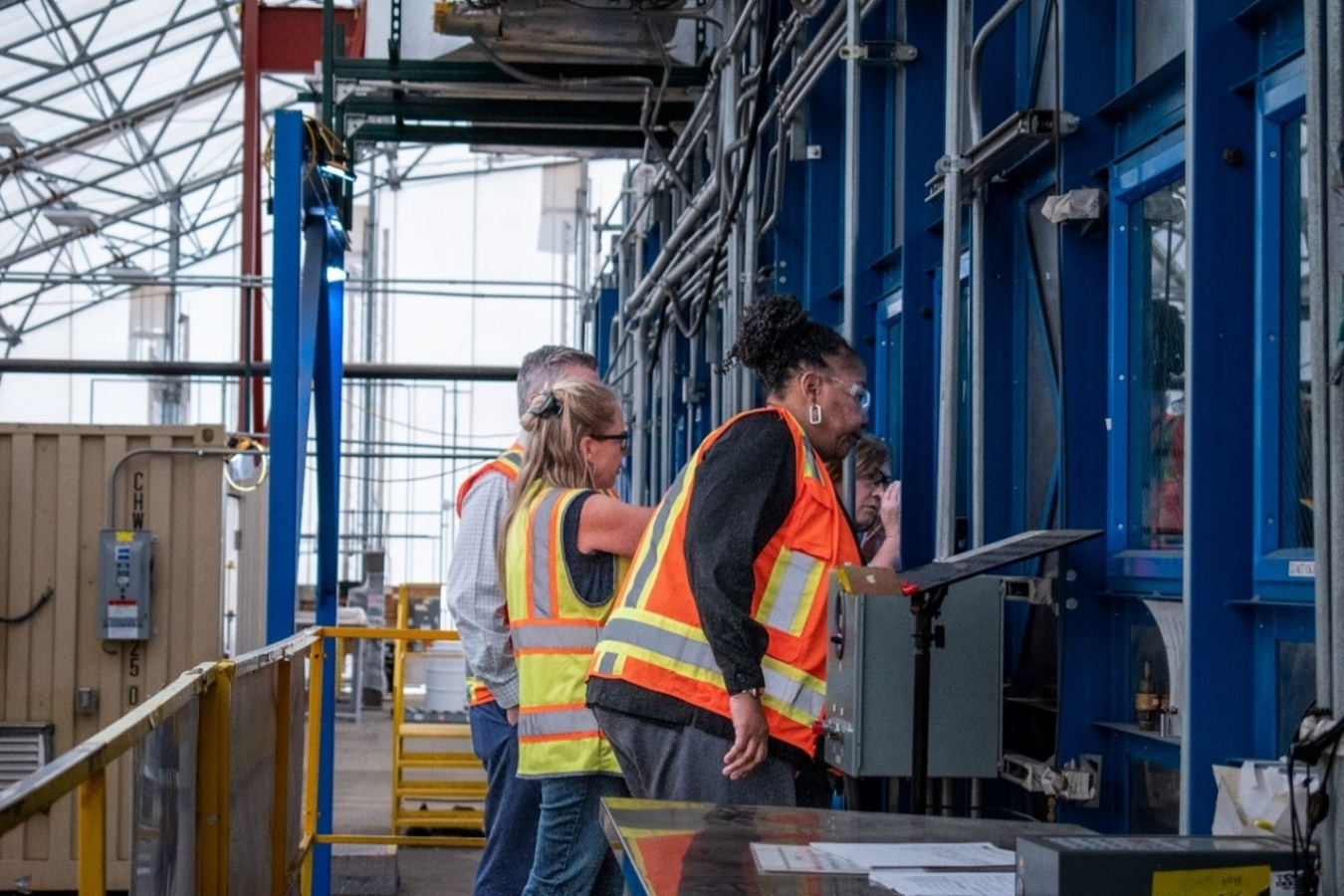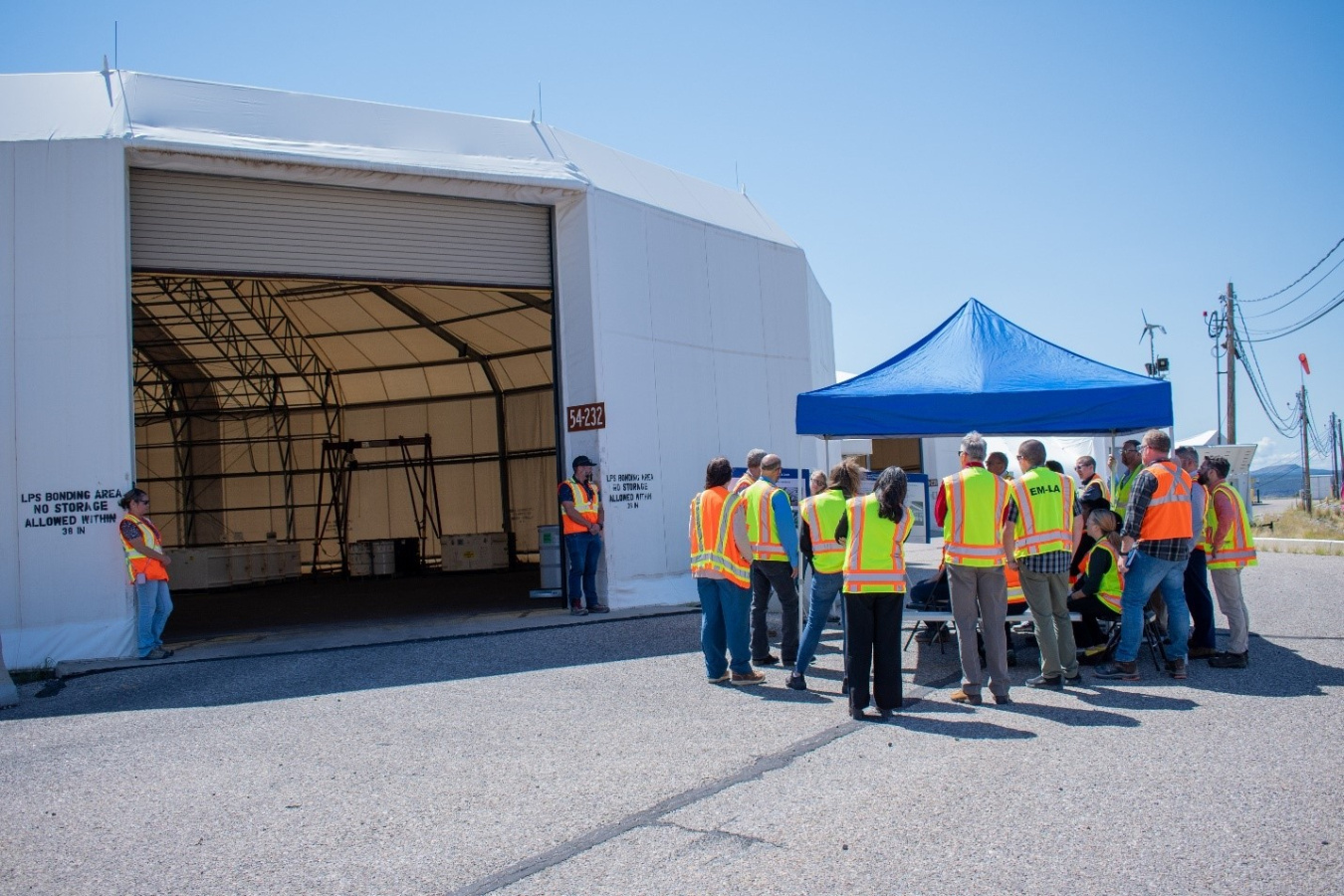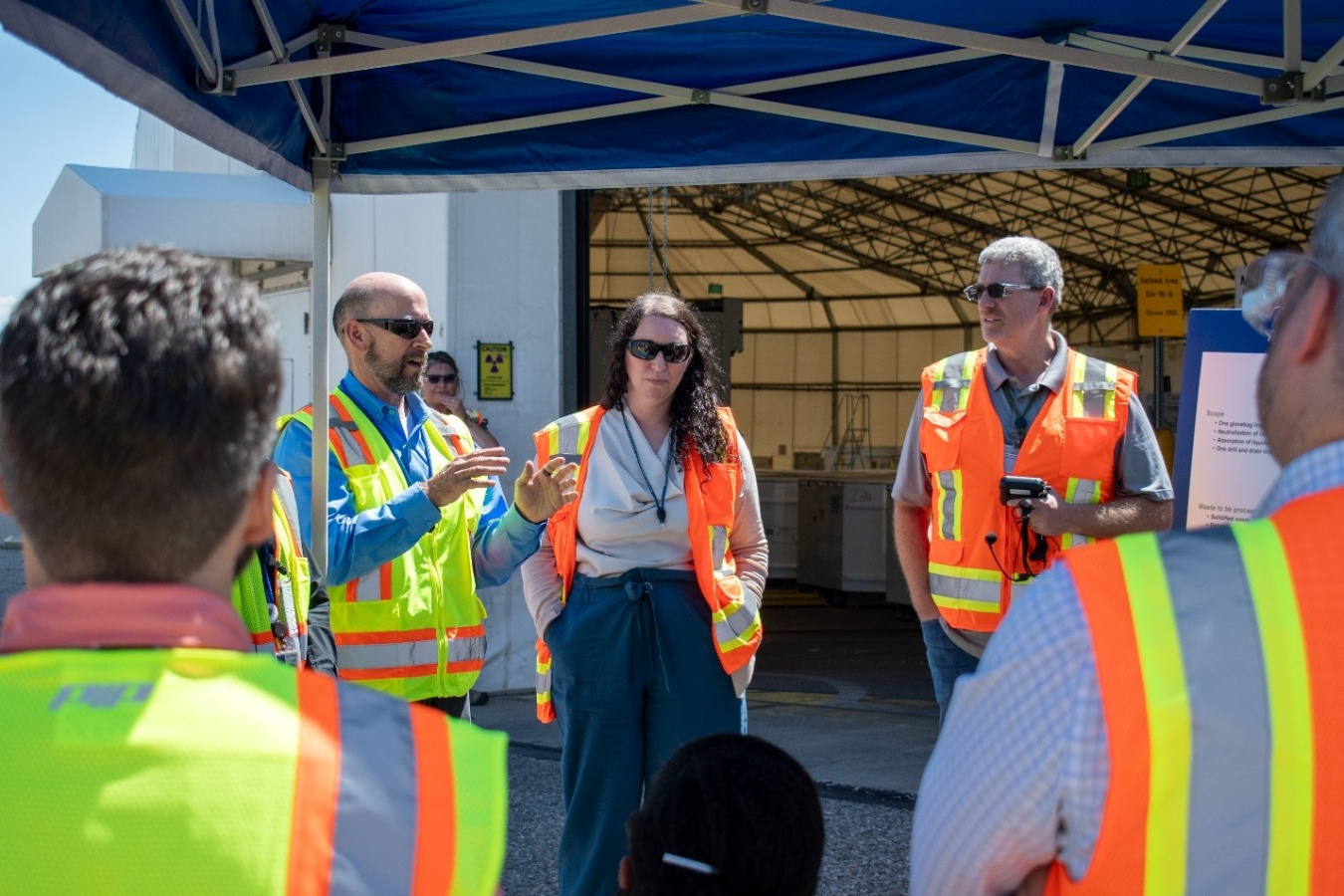Members of the Defense Nuclear Facilities Safety Board viewed progress underway to address legacy transuranic waste during a visit to Los Alamos National Laboratory on July 30. August 12, 2025
Office of Environmental Management
August 12, 2025LOS ALAMOS, N.M. — Members of the Defense Nuclear Facilities Safety Board (DNFSB) viewed progress underway to address legacy transuranic waste during a visit to Los Alamos National Laboratory (LANL) on July 30.
Acting DNFSB Chair Thomas Summers, Board Member Patricia Lee and board staff toured Area G at LANL’s Technical Area 54, where they saw waste storage facilities and processing operations to prepare the transuranic waste for eventual disposal at the Waste Isolation Pilot Plant (WIPP).
“The DNFSB plays an important role in helping to ensure safe operations at a variety of U.S. Department of Energy sites, including LANL,” said Jessica Kunkle, manager of the DOE Office of Environmental Management Los Alamos Field Office (EM-LA). “We appreciate the good-working relationship we have with the board, and we were glad to be able to show them how we are safely carrying out this important mission.”
Safely shipping transuranic and other radioactive waste offsite for disposal is a key component of the legacy cleanup mission at LANL. Since 2018, EM-LA and its legacy cleanup contractor, Newport News Nuclear BWXT-Los Alamos LLC (N3B), have shipped more than 615 cubic meters of transuranic waste to WIPP, and more than 14,000 cubic meters of low-level and mixed low-level radioactive waste to offsite disposal facilities.
“We’re proud of our progress in reducing legacy waste at LANL,” N3B President and General Manager Brad Smith said. “Safety is at the core of our performance for the legacy waste mission and all of our cleanup activities at LANL.”
Newport News Nuclear BWXT-Los Alamos LLC (N3B) Contact Handled-Transuranic Program Manager Brian Clayman explains to Defense Nuclear Facilities Safety Board members and staff the history of corrugated metal pipes (CMPs) that were filled with cemented legacy transuranic waste and buried at Technical Area 54 in 1986. N3B has safely completed the retrieval and size reduction of the 158 legacy CMPs and is now in the process of shipping the 792 segmented pieces to the Waste Isolation Pilot Plant.
Defense Nuclear Facilities Safety Board members observe equipment used for legacy waste processing. Contact Handled-Transuranic Deputy Program Manager Ellen Gammon, second from left, explains how the corrugated metal pipes size-reduction work was safely conducted using protective gear, specialized equipment and continuous air monitoring to abate risk to workers, the public and the environment.
Defense Nuclear Facilities Safety Board tour participants stop in front of Dome 232 at Technical Area 54, Area G, to view a legacy transuranic waste storage site. Contact Handled-Transuranic Program Manager Brian Clayman discussed ongoing remediation processes, including glovebag operations and drill-and-drain techniques, which are used to safely remove liquids from solid waste containers to ensure that containers meet the compliance requirements for shipment to the Waste Isolation Pilot Plant.
Newport News Nuclear BWXT-Los Alamos LLC (N3B) President and General Manager Brad Smith, front left, speaks to Defense Nuclear Facilities Safety Board tour participants in front of Dome 232 at Technical Area 54, Area G, emphasizing the critical nature of the Environmental Management Los Alamos Field Office and N3B’s environmental cleanup work. He noted the proximity of the site to neighboring communities and emphasized the importance of safely and effectively managing legacy waste.
To receive the latest news and updates about the Office of Environmental Management, submit your e-mail address.






